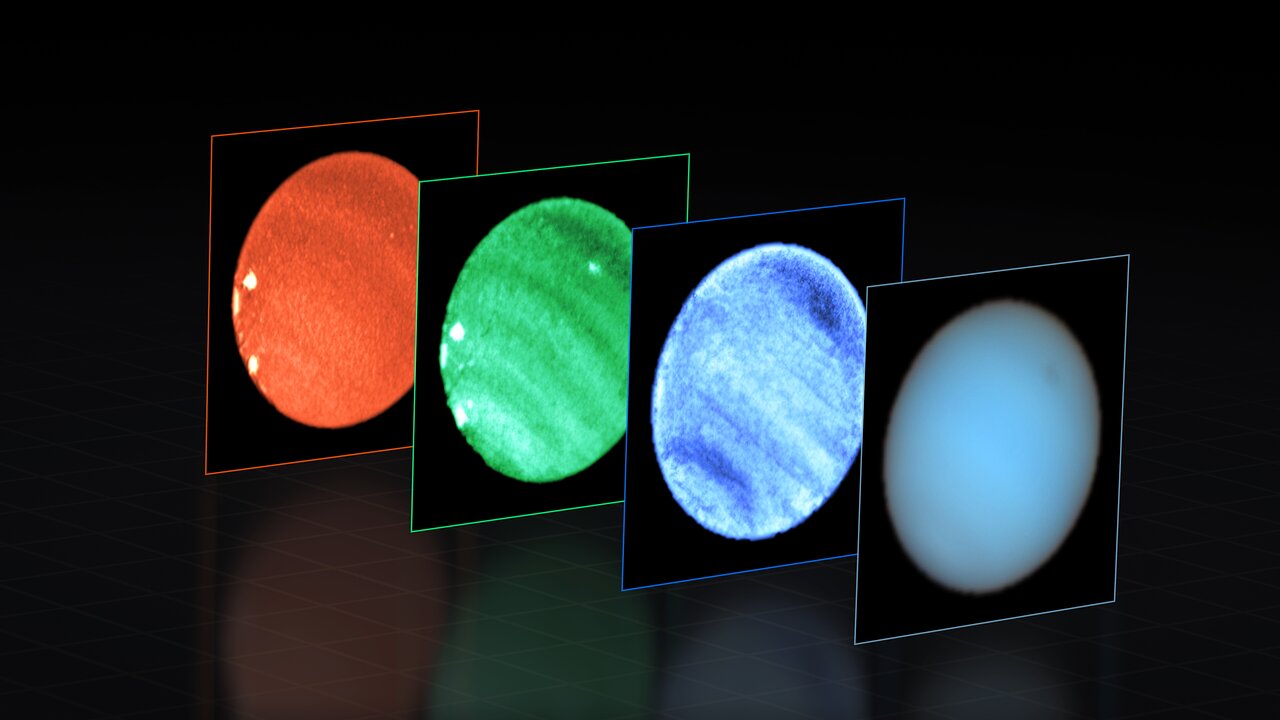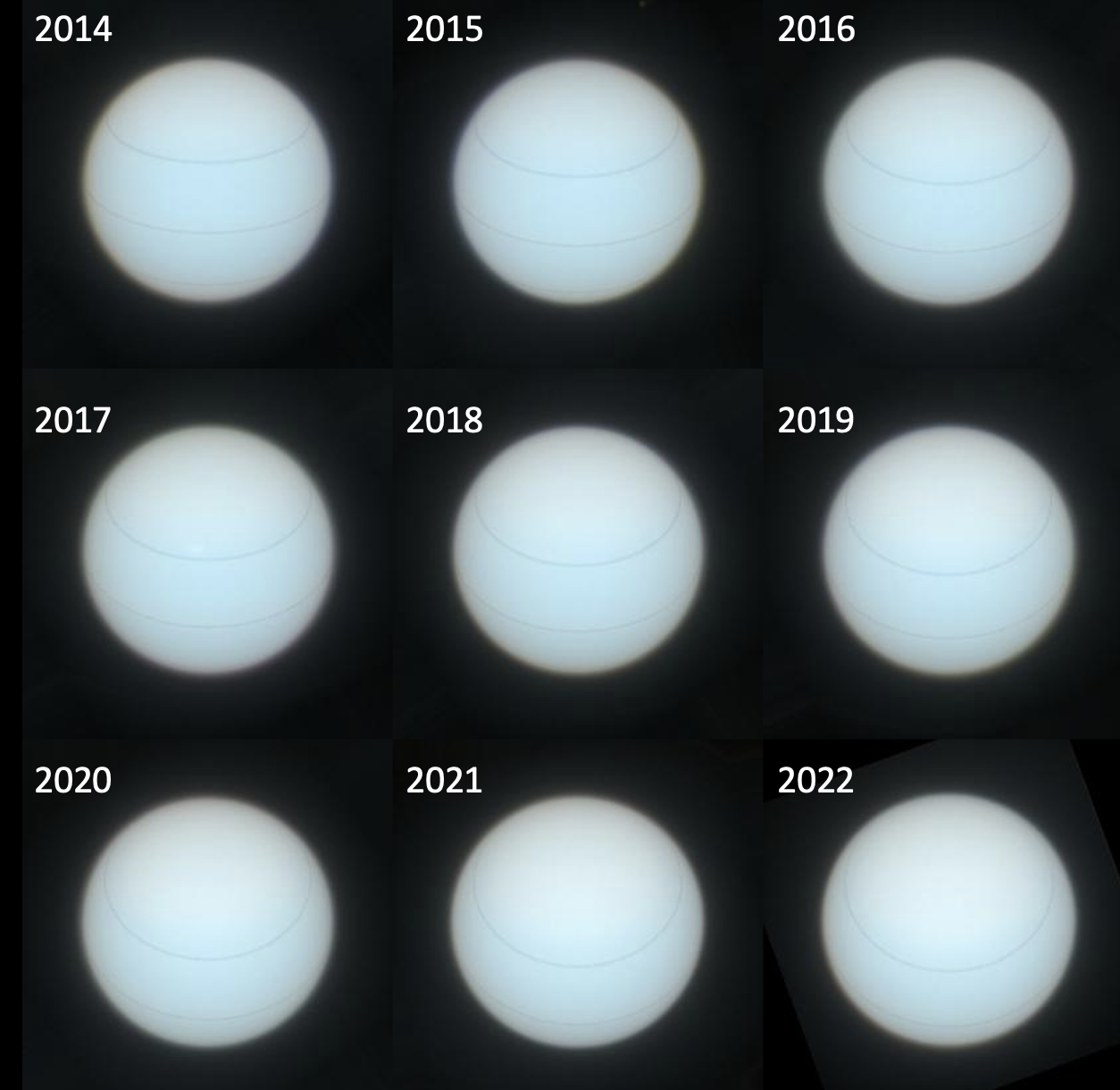Ice Giants Telescope Observations
I have been interested in studying the reflectance spectra of the 'Ice Giants' (Uranus and Neptune) since the early 2000s and have been engaged in ground-based observations since 2006.
In 2018 I led a paper announcing the discovery of hydrogen sulphide (H2S), from Gemini/NIFS observations made in 2009/2010 and published in Irwin et al. Nature Astronomy, 2, 420-427, 2018, doi: 10.1038/s41550-018-0432-1. This resulted in widespread media coverage (e.g., here).
This paper was followed up by a probable detection of H2S in Neptune's atmosphere, published in Irwin et al., Icarus, 321, 550-563,2019, doi: 10.1016/j.icarus.2018.12.014. Recently, I have been working on improved modelling the reflectance spectrum of these planets using the Minnaert limb-darkening approximation. We presented our initial work on Neptune at the EPSC 2020 meeting, and a copy of the presentation may be found here for here. This work has now been published as Irwin et al., Icarus, 357, 114277, 2021, doi: 10.1016/j.icarus.2020.114277. Following on from this we published our 'holistic' model of the atmospheres in these planets, Irwin et al., J. Geophys. Res: Planets, 127, e07189, 2022, doi: 10.1029/2022JE007189. This paper was accompanied by a fantastic press release from the NOIRLab and received quite a bit of press attention (e.g., here).Most recently, we have made the first ever ground-based detection of a dark spot in the atmosphere of Neptune, and the first-ever measurement of the visible reflectance spectrum of such a spot, using the Multi Unit Spectroscopic Explorer (MUSE) instrument at the European Southern Observatory (ESO) Very Large Teslescope (VLT) in Chile. This was reported in Irwin et al., Nature Astronomy, 7, 1198-1207, 2023, doi: 10.1038/s41550-023-02047-0, which was accompanied by a fabulous press release from ESO, and resulted in lots of media coverage (e.g., here).

A subsequent paper, following up on the details of this discovery was published in Irwin et al., J. Geophys. Res: Planets, 128, e07980, 2023, doi: 10.1029/2023JE007980.
A further paper on the colouration of Uranus and Neptune and modelling the seasonal cycle of Uranus's colour was published at the start of 2024 (Irwin et al., MNRAS, 527, 11521 - 11538, 2024, doi: 10.1093/mnras/stad3761) and received a lot of press coverage. Supporting images and videos may be found here. A video showing the changing appearance of Uranus during its 84-year orbit about the Sun can be found on here on YouTube.

Most recently, I worked on a paper that re-examined the heat balance of Uranus and found that in fact Uranus is not in thermal equilibrium with the Sun, but in fact has a small amount of residual heat left over from formation. This paper was published in Irwin et al., MNRAS, 540, 1719 - 1729, 2025, doi: 10.1093/mnras/staf800. It also attracted some press coverage .